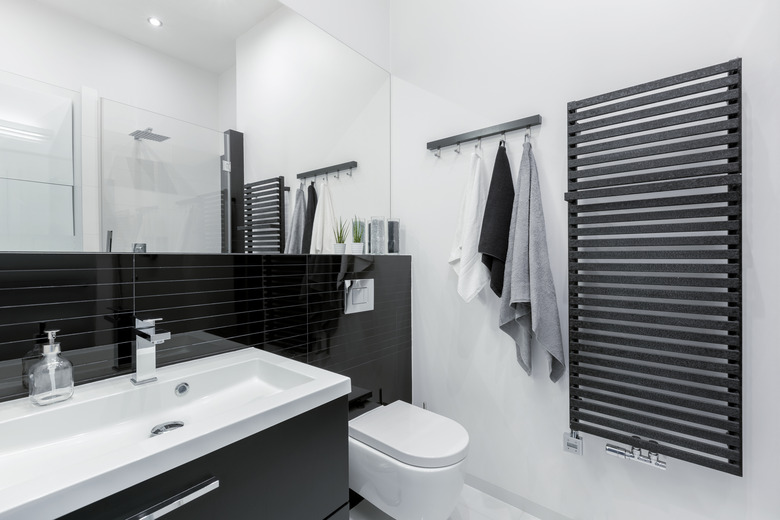Home Remedy For Slime In A Toilet
We may receive a commission on purchases made from links.
Don't worry, no matter how much you use your toilet, the permanent stains and slimy buildup in the toilet bowl aren't your fault. They are most likely caused by minerals in the water mixed with rust from any metal parts that happen to be in the tank and possibly bacteria, such as Serratia marcescens, which is responsible for the pink rings.
Neither mineral deposits nor toilet bacteria like Serratia are harmful to your health, says Henderson Water Utility, but they look gross, and it would better for everyone if they weren't staining your toilet. You can handle them with common household cleaning agents.
Where Toilet Stains Come From
Where Toilet Stains Come From
Unless your home has a very effective filtration system, minerals in the water are inevitable. The ones most responsible for toilet stains are iron and manganese, although calcium plays an important role in staining by building up inside the siphon jets in the bowl rim and restricting water flow, which allows the staining minerals to accumulate. The result is a ring of discoloration that seems to drip down along the side of the bowl.
Bacteria like Serratia are present in soil, dust and surface water virtually everywhere. They love the humidity of the toilet bowl, even (and especially) if you clean it regularly with soap, because certain bacteria thrive on phosphates. They come into the bathroom through open windows, and they are most likely to grow in hot summer months. Besides forming pink rings on the side of the bowl, they may even turn the bowl water a sickly, slimy pink.
A Treatment for Pink Bacteria
A Treatment for Pink Bacteria
It's very difficult to get rid of Serratia completely, says Proud Green Home, but you can remove the discoloration it causes very easily, and if you continue to clean your toilet often, the bacteria you inevitably miss won't have a chance to multiply. Chlorine kills Serratia, so any cleaning product that contains bleach will be effective.
Simply empty the bowl and squirt any disinfectant bathroom cleaning product that contains bleach around the inside, making sure to cover the pink rings, and let it stay there for an hour. When you come back, scrub the sides of the bowl well using a toilet brush and swish water to rinse off the cleaning gel or foam. Repeat this treatment once a week to prevent the bacteria from growing back. It also helps to leave the toilet lid closed so new bacteria can't get in.
Getting Rid of Brown Stains
Getting Rid of Brown Stains
The first order of business is to scrub the existing brown stains from inside the toilet bowl with a pumice stone after turning off the water and flushing to empty the bowl. You'll want to precede this treatment with a thorough cleaning using a disinfectant cleaner. Once the stains are gone, a simple procedure suggested by One Good Thing can unblock the siphon jets so minerals don't keep accumulating and causing more stains.
Soak some paper towels in vinegar and stuff them inside the toilet rim and leave them so the vinegar can dissolve the calcium buildup. Remove them after a couple of hours and scrub well using a toilet brush and toilet cleaner; then flush. It doesn't hurt to fill the tank with a gallon of vinegar and leave it for a few hours, because it will dissolve all the minerals in the tank.
If you need a more rigorous cleaning, turn off the water, empty the tank, fill it with 1 or 2 gallons of vinegar, lay duct tape on all the siphon holes and flush once. The tape will keep the vinegar inside the siphon holes, and when you come back in the morning to remove the tape, turn on the water and flush, all the mineral deposits will wash away.
